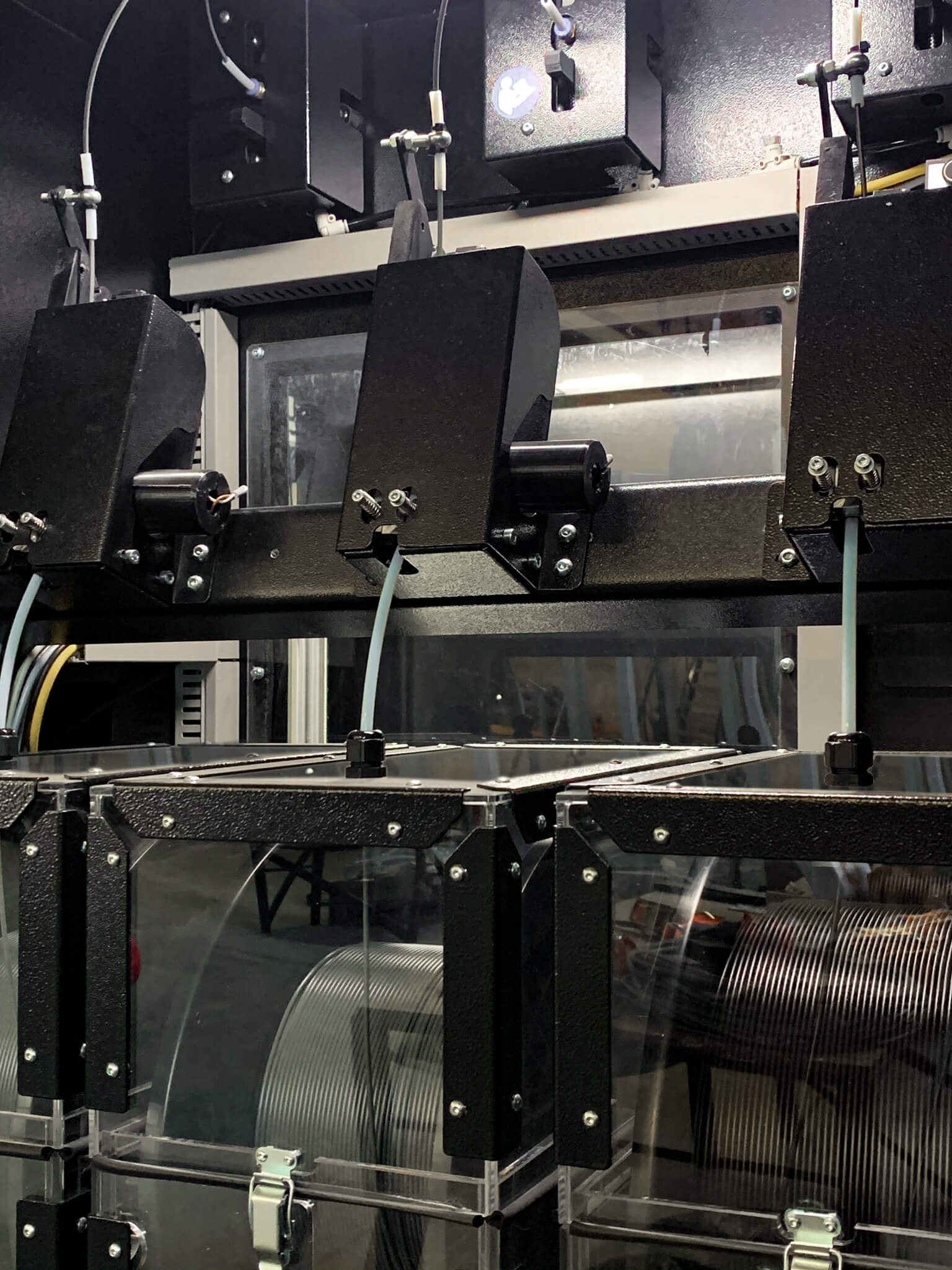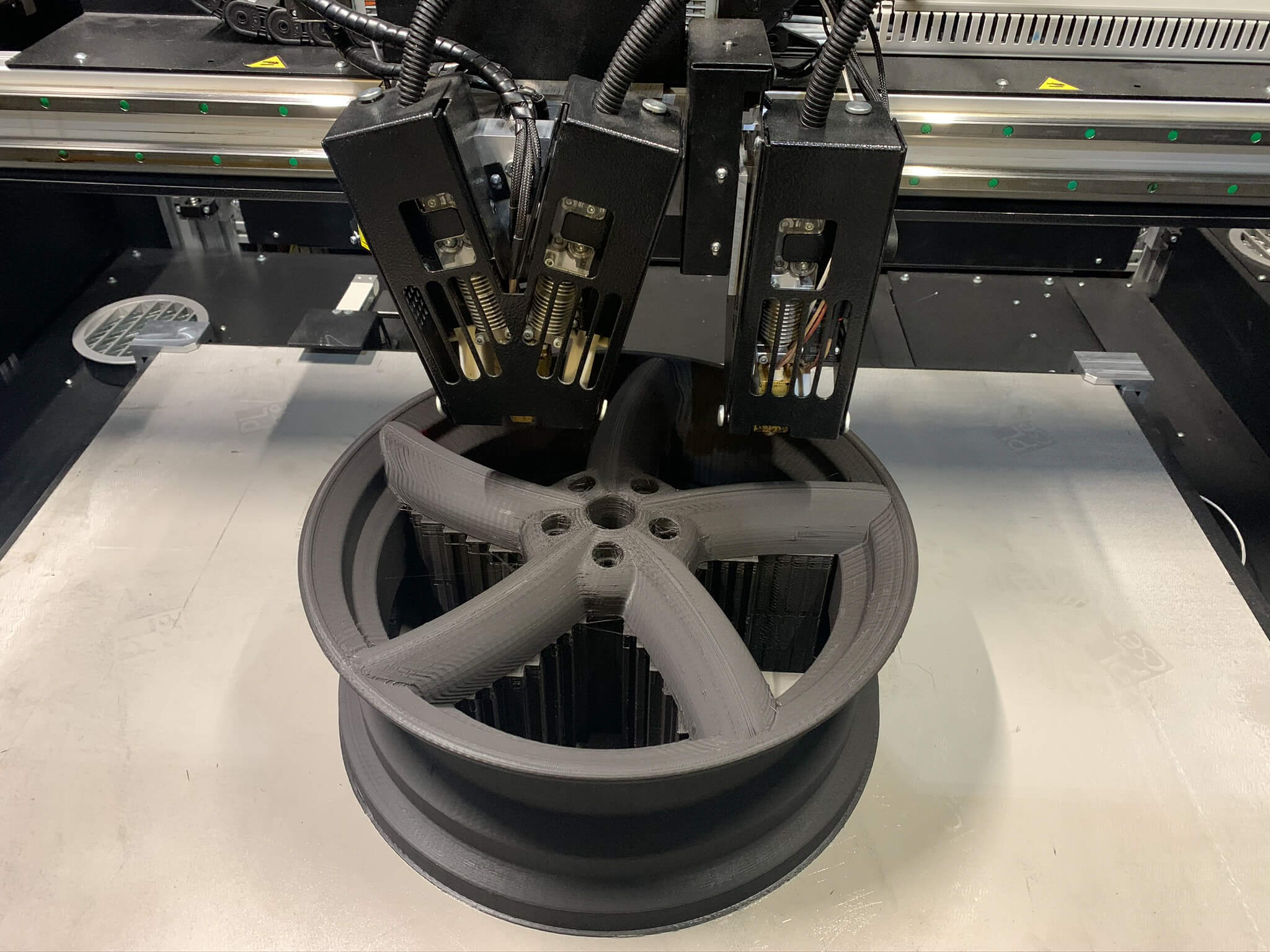We have already said, the Saturn 3D printer is equipped with a series of functionalities, influencing the comfort of use and applicable in the industry.
How does it work in practice? Check out what kind of facilities related to the filaments and the operation of the printer we used in the 3D Saturn printer.
Separate space for the materials
On the right-hand side of the Saturn's printer, there is a separate cabinet for the materials. It holds three reels of material, each weighing up to 10 kg. This amount allows the 3D printer to work constantly for a long time, without having to change the spool frequently, which will be appreciated by companies producing large-size items.
Tight cabinet is also a way to protect the filament against dirt and dust, which cannot be eliminated in production halls.
Polibox for reels
All materials are put in separate boxes -poliboxes, in which is a gel damp-reducing liquid. It prevents water molecules from penetrating the material during storage and while the 3D printer is working.
Installing poliboxes a filament cabinet allows printing from more demanding materials, easily absorbing moisture from the environment and storing the filaments longer after opening, without the risk of losing their properties.
A practical solution is to put a separate, lockable space in the pillar cabinet - for storing tools, files or equipment, which should always be within easy reach.
 Spacious filament cabinet in a Saturn 3D printer
Spacious filament cabinet in a Saturn 3D printer
Which materials can be used to print in a Saturn 3D printer?
ATMAT Saturn offers the printing from a wide range of materials -the most popular are PLA, PET-G, PA, ABS (for limited geometry prints) and PVA (as support material). The only restriction when choosing the material for 3D printing is temperature -the parameter for the material must comply with the parameters declared in the printer.
 The model of the rim printed on a Saturn 3D printer
The model of the rim printed on a Saturn 3D printer
Material presence and flow sensors
One of the smart solutions in this 3D printer is the material presence sensor. The printer mechanically checks the presence of the material, thus identifying its end or breaking. When this happens, the material remaining on its way to the head is extracted, and when it is completely worn out, the printer's control panel displays information about the need to fill the material.
If there is a loss of material in one of the main head's escutcheons, the 3D printer does not stop working -the printout continues, but at a slower speed. Only when there is no filament in the second head does the machine stop printing. When the material is replenished, the machine starts working at a normal speed.
 Printing heads in a Saturn 3D printer
Printing heads in a Saturn 3D printer
Another feature installed in the Saturn 3D printer is the filament flow sensor, responsible for detecting head blockage. When the process is stopped for some reason, the 3D printer signals the event by sound and light. An error message appears on the machine's control panel with an instruction manual. Filament flow control allows the user to react quickly in case of sudden, unplanned stoppage of material dosing. This reduces the risk of material loss and damage to the printed component.
Summary
We designed the Saturn 3D printer for the industrial sector. A special cabinet for materials, poliboxes, enabling to work with demanding filaments and original solutions detecting the presence of the filament, its usage or flow meet all the requirements and make the 3D printer unique on the European market.
The Saturn printer is available for sale. We invite you to contact ATMAT Sales Engineers to obtain an offer for this device: https://atmat.pl/kontakt
